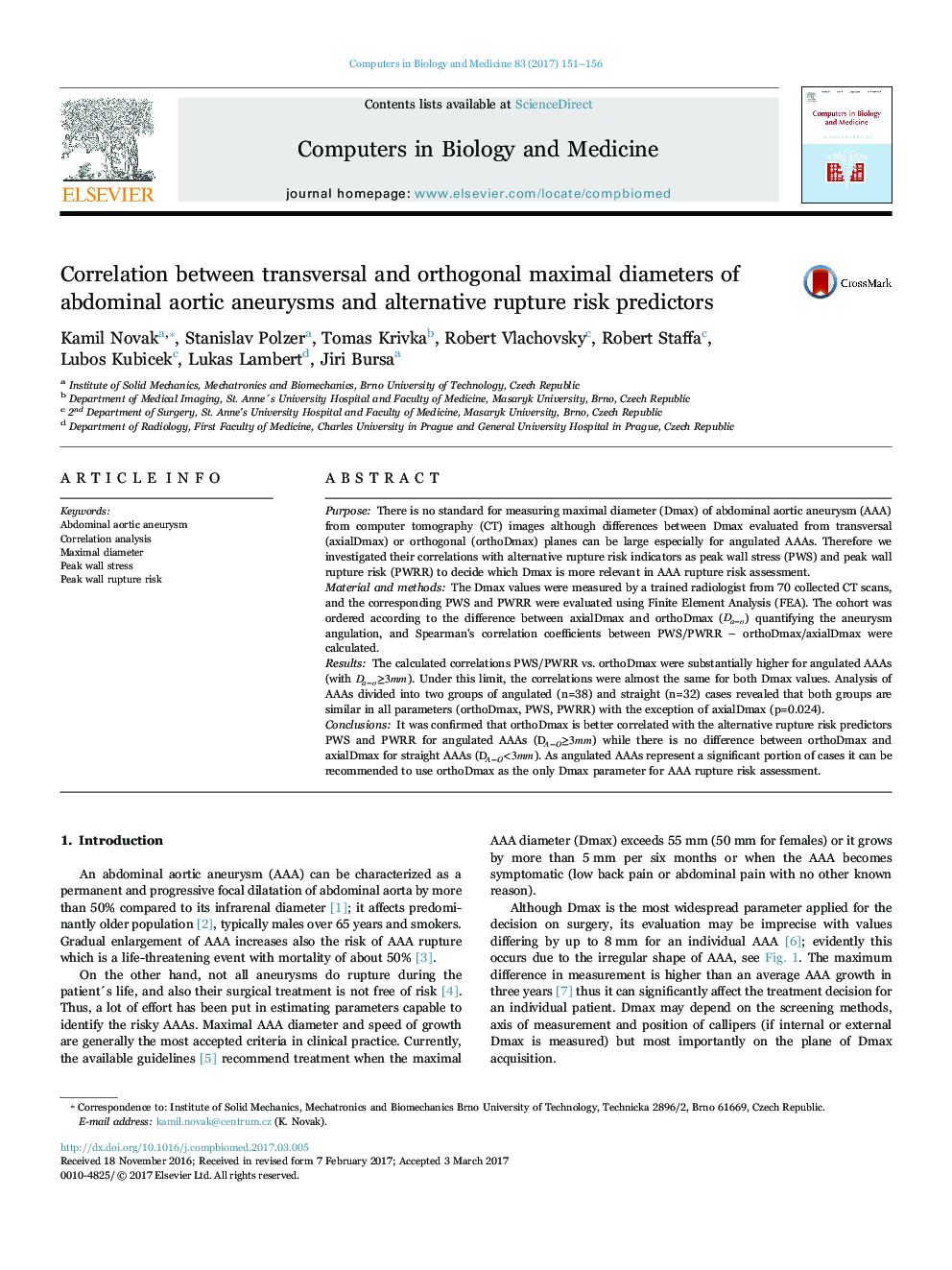| کد مقاله | کد نشریه | سال انتشار | مقاله انگلیسی | نسخه تمام متن |
|---|---|---|---|---|
| 4965041 | 1447937 | 2017 | 6 صفحه PDF | دانلود رایگان |
- Rupture risk assessment of 70 abdominal aortic aneurysms ranked by their angulation.
- Axial and orthogonal max. diameter of aneurysms vs. finite element analyses results.
- Orthogonal diameter of angulated aneurysms is smaller than axial diameter.
- Orthogonal diameter of angulated aneurysms is better correlated with peak wall stress.
- Orthogonal diameter should be used for aneurysm characterization.
PurposeThere is no standard for measuring maximal diameter (Dmax) of abdominal aortic aneurysm (AAA) from computer tomography (CT) images although differences between Dmax evaluated from transversal (axialDmax) or orthogonal (orthoDmax) planes can be large especially for angulated AAAs. Therefore we investigated their correlations with alternative rupture risk indicators as peak wall stress (PWS) and peak wall rupture risk (PWRR) to decide which Dmax is more relevant in AAA rupture risk assessment.Material and methodsThe Dmax values were measured by a trained radiologist from 70 collected CT scans, and the corresponding PWS and PWRR were evaluated using Finite Element Analysis (FEA). The cohort was ordered according to the difference between axialDmax and orthoDmax (Daâo) quantifying the aneurysm angulation, and Spearman's correlation coefficients between PWS/PWRR - orthoDmax/axialDmax were calculated.ResultsThe calculated correlations PWS/PWRR vs. orthoDmax were substantially higher for angulated AAAs (with Daâoâ¥3mm). Under this limit, the correlations were almost the same for both Dmax values. Analysis of AAAs divided into two groups of angulated (n=38) and straight (n=32) cases revealed that both groups are similar in all parameters (orthoDmax, PWS, PWRR) with the exception of axialDmax (p=0.024).ConclusionsIt was confirmed that orthoDmax is better correlated with the alternative rupture risk predictors PWS and PWRR for angulated AAAs (DAâOâ¥3mm) while there is no difference between orthoDmax and axialDmax for straight AAAs (DAâO<3mm). As angulated AAAs represent a significant portion of cases it can be recommended to use orthoDmax as the only Dmax parameter for AAA rupture risk assessment.
320
Journal: Computers in Biology and Medicine - Volume 83, 1 April 2017, Pages 151-156
